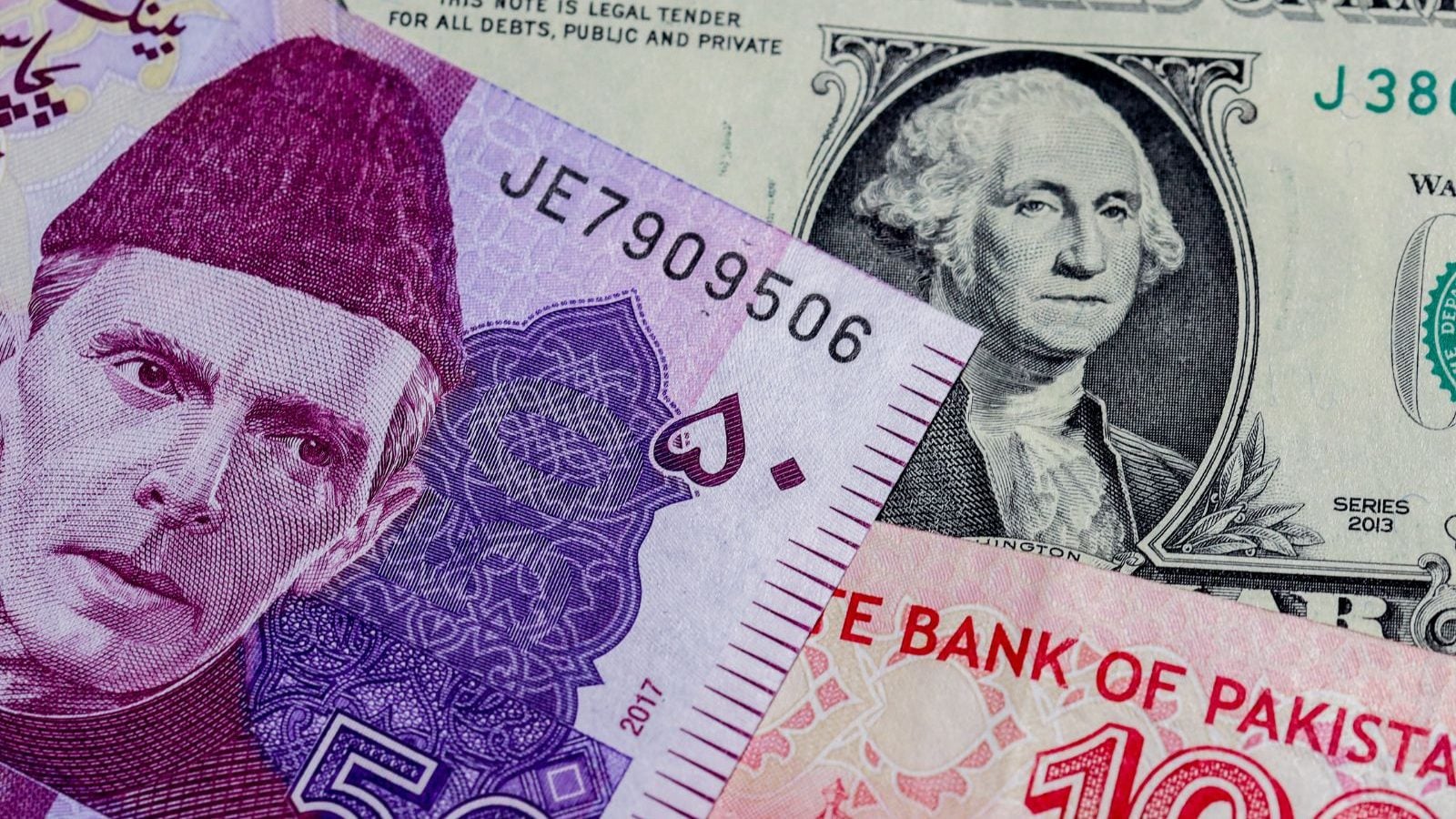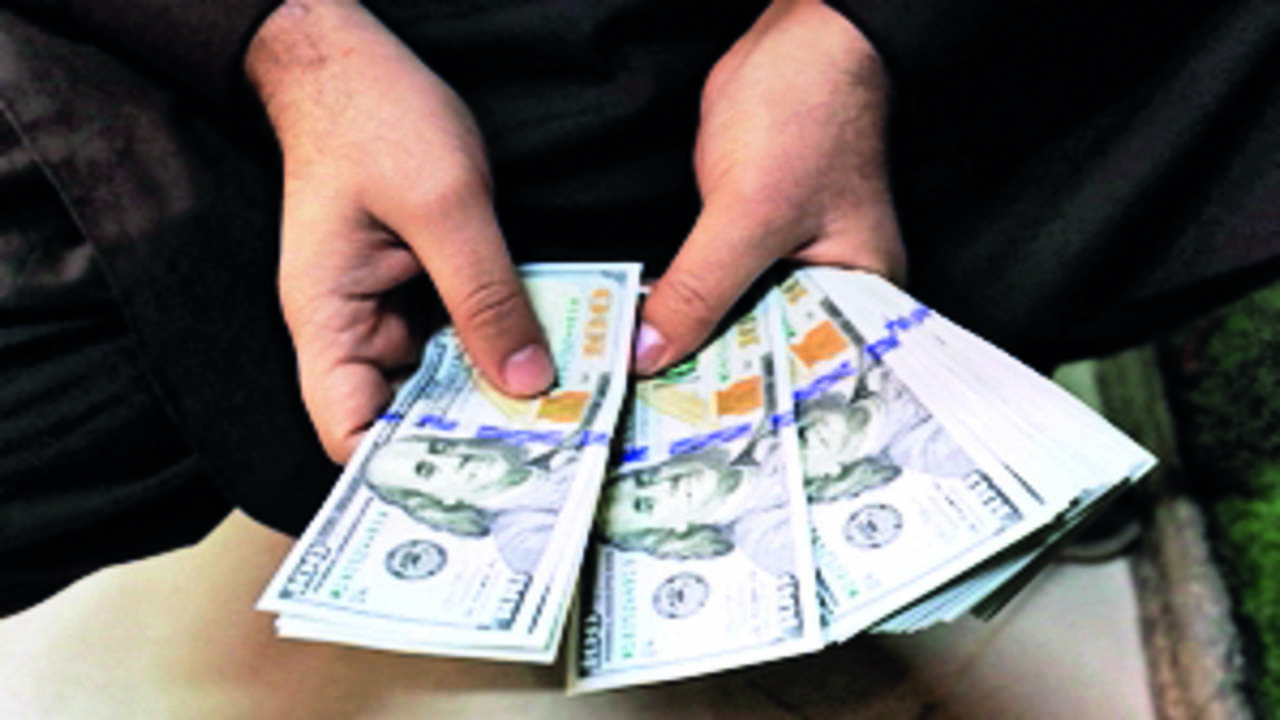Pakistan’s Rupee Dives to All-Time Low of 299 Against Dollar Amid Import Relaxation and Economic Concerns
Pakistan eased import restrictions leading to economic concerns in the country, while their currency plummets to a record low of 299 against the Dollar.

Pakistan’s Rupee Dives to All-Time Low of 299 Against Dollar Amid Import Relaxation and Economic Concerns
In the interbank market on Tuesday, Pakistan’s rupee sank to a historic low of 299 versus the US dollar, constituting a crucial turning point in its downward trajectory. According to central bank data, the reduction of import restrictions that started in June was a key factor in this troubling development. A $3 billion loan program from the International Monetary Fund (IMF) that was designed to revive the country’s faltering economy included the elimination of these prohibitions as a condition. Although this action was designed to ease economic pressure, it instead increased demand for the dollar as well as put further strain on the currency of the region.
Struggles of the Economy and Political Turmoil
The steps Pakistan took in 2022 to reduce withdrawals from its depleting foreign reserves are responsible for the rupee’s decline. These limitations were put in place in an effort to stimulate the economy. The former prime minister Imran Khan‘s imprisonment on corruption accusations caused political unrest in the nation, which changed the course of events. The ensuing volatility made the economic problems worse as well as caused a downward spiral in the worth of the rupee.
Pakistan is currently governed by a caretaker administration as a result of Imran Khan’s arrest disrupting the political environment. This transitional administration has been tasked with managing acute political tensions, surging inflation, as well as unprecedentedly high interest rates in addition to guiding the country through the upcoming national election, which is theoretically set for November. The value of the rupee has been under tremendous pressure as a result of the interaction of these variables.

Insights from Financial Experts
The head of research at the trading firm Arif Habib in Karachi, Tahir Abbas, forecasts that the rupee’s value will trade between 295 and 305 versus the dollar in the not-too-distant future. He explains the falling trend as being caused by the easing of import restrictions as well as the clearing of the backlog for both goods and services. In addition, the outflow of rupees has been facilitated by global firms remitting profits.
Multifaceted Reasons Behind the Decline
Financial commentators are blaming a number of important factors for the worrying slide of the rupee. The local currency is under intense pressure due to an increase in the demand for US dollars for imports as well as business operations. The rupee’s depreciation has also been driven by worries over the nation’s declining foreign exchange reserves along with impending government repayments of its foreign debt.
State Bank of Pakistan’s Policy Shift and Its Impact
The State Bank of Pakistan‘s (SBP) most recent change in policy has made the issue worse. The rupee, which was already weak, has been stressed through the permission of commercial banks to begin import payments using letters of credit, thus hastening the currency’s depreciation. Although this change was made to ease commerce, it instead caused the currency to plummet sharply.
Foreign Exchange Reserves and Economic Implications
The nation’s limited foreign exchange reserves have additionally played a major role in the decline of rupee. Although the recent data display a little improvement in the reserves, with $13.38 billion recorded by the week ending August 11, 2023, this number remains significantly lower than the peak of $27.2 billion which had been noticed in August 2021. This paucity of foreign reserves has bolstered the rise of the US dollar. Financial experts are warning stakeholders, such as market participants, investors, as well as traders, to exercise prudence. Growing exchange rate volatility prompts worries about possible wide-ranging effects on trade, investments, along with the state of the economy as a whole.

The Path Forward for Pakistan
In addition to a simple numerical drop, the spiralling trajectory of the Pakistani rupee against the US dollar is a complicated story of economic complexity, political instability, as well as the intricate interplay of global financial dynamics. For Pakistan’s politicians, financial professionals, and citizens, the rupee’s record low represents both a challenge as well as a chance to reevaluate their plans along with priorities.
The current situation highlights the delicate relationship between political stability and the fundamentals of the economy. Due to increased demand for the dollar, the easing of import restrictions- intended to support the economy- has ironically put pressure on the rupee’s value at the time. This begs the important question of whether reforms to the economy can be implemented without having unintended repercussions that increase volatility.
The transition to a caretaker government amid political unrest exacerbates the situation. Political stability as well as economic recovery both demand careful consideration when making decisions, thus it is important to work collaboratively. The importance of the government’s involvement in promoting an environment that is favorable to trade, investment, and growth increases, as does the importance of its capability to effectively control inflation and interest rates.
The delicate balancing act between foreign exchange supply and demand is at the core of the issue. Although the change in policy carried out by the State Bank of Pakistan was meant to ease commerce, it instead seems to have compromised the rupee’s resistance. The issue is how far policy changes should put short-term trade facilitation ahead of long-term currency stability.
The significance of keeping foreign exchange reserves amid these complications cannot be emphasized. Despite considerable improvement, the present reserves are still far below their peak. In addition to increasing these reserves, the issue is to diversify the underlying sources of these funds in order to lessen the nation’s sensitivity to outside shocks.
The warning to exercise caution must ring true in light of these factors. Every area of the economy is affected by the rise in exchange rate volatility, from domestic investments to global trade. It is an appeal to all parties involved to proceed cautiously as well as cooperatively, encouraging an atmosphere in which considered judgment takes precedence over instinctive reactions.
It is essential that the country take a forward-looking stance as it navigates these new waters. The basis of the rupee must be strengthened by a combination of long-term structural changes, transparent policy communication, along with smart budgetary management. It is a chance to deal with weaknesses and turn obstacles into forces for resilience and expansion.
Pakistan’s goal of economic stability as well as currency strength is ultimately a shared endeavour. Citizens, decision-makers in government, financial institutions, as well as the global community must all work together to make it happen. The nation can be led to a more affluent and secure future by using the lessons acquired from the current rupee volatility as a compass.





